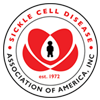Trusted Resources: Evidence & Education
Scientific literature and patient education texts
Shared Decision Making for Hydroxyurea Treatment Initiation in Children With Sickle Cell Anemia
source: Pediatric Blood & Cancer
year: 2015
authors: Lori E. Crosby, Lisa M. Shook, Russell E. Ware, William B. Brinkman
summary/abstract:Clinical trials have demonstrated hydroxyurea’s efficacy in improving health outcomes for children with sickle cell anemia (SCA) who have medical complications. New NHLBI clinical guidelines will recommend offering hydroxyurea to young patients regardless of clinical severity. Shared decision making may be an effective approach for implementing this practice change. Decision aids that help patients/parents feel empowered to make this decision and help providers feel comfortable in discussing hydroxyurea as a preventive treatment may facilitate shared discussions between families and providers. We recommend six strategies providers can use to facilitate these discussions while decision aids and tools are being developed.
organization: Cincinnati Children's Hospital Medical Center, USA; University of Cincinnati College of Medicine, USADOI: 10.1002/pbc.25124
read more full text
Related Content
-
Hydroxyurea for Sickle Cell DiseaseHydroxyurea is a medicine that doctors h...
-
Developing Hydroxyurea, the First FDA-Approved Therapy for Sickle Cell Diseasehttps://www.youtube.com/watch?v=0kIz5ZKy...
-
Desire for Parenthood and Reproductive Health Knowledge in Adolescents and Young Adults With Sickle Cell Disease and...Background/Objective: Sickle cell disea...
-
Sickle Cell Anemia Toddlers Benefit from Maximal Hydroxyurea Doses, Study FindsIntensifying treatment with hydroxyurea ...
-
Effort set to help sickle cell patients manage medsVanderbilt University Medical Center is ...
-
Hydroxyurea and Sickle Cell Disease: A HRSA EMBRACE Projecthttps://www.youtube.com/watch?v=AyMP3P9E...
-
Sickle Cell Disease Research Shows Progress in Preventing Related Complications and DeathStudies aim to limit pain crises, preven...
To improve your experience on this site, we use cookies. This includes cookies essential for the basic functioning of our website, cookies for analytics purposes, and cookies enabling us to personalize site content. By clicking on 'Accept' or any content on this site, you agree that cookies can be placed. You may adjust your browser's cookie settings to suit your preferences. More Information
The cookie settings on this website are set to "allow cookies" to give you the best browsing experience possible. If you continue to use this website without changing your cookie settings or you click "Accept" below then you are consenting to this.




 +myBinder
+myBinder
